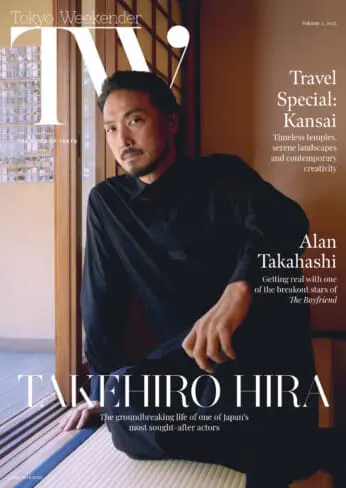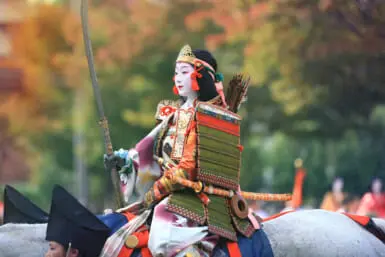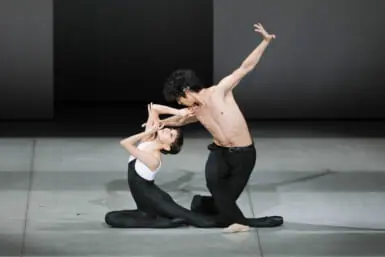by Yurie Horiguchi
Some Fishy Tales
Have you ever noticed that at a Japanese table, fish is always served with its head to the left and the belly facing the eater? If you are observant, you may have seen that this is also the way in which large fish are lined up on fishmonger counters.
Since the days of yore, when the fisherman catches a tai (sea-bream) or any other good fish, he lays it down in a box or basket with the tail to the right and the belly facing him. This position is never changed, no matter how many hands the fish subsequently passes through—from auctioneer to middle-man to retailer. And a dedicated cook knows exactly which side up is “right.”
The exposed side is said to keep its freshness and taste better than the underside that has been in constant contact with baskets, boards or plates.
So it came about that true gourmets were wont to eat only one side of a fish – and some still do! But, in general, inflation has put a stop that extravagant nonsense.
There is a story about a rather unpopular Shogun who, having polished off the top half of his fish, called for more. An attendant took his plate back to the kitchen, but there was no more.
Instead of throwing himself on his sword—or rather, kitchen knife, as only samurai had swords in those days—as the famous French chef Vatel did when the fish failed to arrive for a royal banquet, the Shogun’s wily cook gently turned the fish over on the uneaten side and it was placed again before the lord, who devoured it with relish.
The poor Shogun never lived it down—morally, that is. The whole court wont around sniggering at his nescience, but I never have been able to find out what happened to him after that.
* * *
Broiled eels, called unagi or kabayaki, are one of Japan’s greatest gourmet delicacies, as any foreigner who has tried them once will know.
I won’t go into the gruesome details of how the live eel is skewered to a board and skinned alive, then has all its bones removed, etc. That might put one off.
So suffice it to say that eel eating has been enjoyed by the Japanese since ancient days, and kabayaki is even mentioned in records dating back to the 14th Century.
Today the Japanese have a thing about eating eels during the doyo or dog-days between July 20 and Aug. 6, one of which days happens to be the Day of the Ox (Ushi-no-hi). This is thanks to the forerunner of Japan’s presently ubiquitous PR men.
His name was Gennai Hiraga, and he was an Edo samurai and writer into the bargain. One of his good friends ran a broiled eel restaurant.
One day he complained to Gennai that business was poor on hot summer days. In no time, Gennai came up with a solution in the form of a sign reading “Ushi-no-hi” which he placed in front of the shop.
The public, as gullible as it is today, put two and two together and was soon convinced that unagi should be eaten on that day, and business prospered. When other unagi-yas saw what was happening they too put up “Day of the Ox” signs.
From there it was only a step to further convince people that broiled eels eaten at the end of July, or on any hot summer day, give vitality and stamina to combat the heat. In later years, scientists obligingly found that unagi contain more vitamins than other fish and are consequently very nutritious.
So eels were in as a summer dish, and although the eating of them during that season was first a purely Edo custom, it gradually spread to other parts of the land.
If this story is true, the custom must now be about 200 years old.
* * *
There is a little fish, about seven inches long, indigenous to Japan, called konoshiro. It looks like a sardine, but no sardine that I have ever encountered can do what the little konoshiro is purported capable of doing.
Superstition has it that a konoshiro will die in place of a beloved person whose demise is not desired.
But first, as Mrs. Beaton puts it in her famous cook book, you must catch your konoshiro, for it must be alive to create its little miracle.
The fish is brought to the house of the dying person, and is then dressed in a minature white funeral kimono. A tiny coffin is made wherein it is placed and Buddhist priests recite sacred sutras over it. Incense is burned and candles lit, as for a funeral proper, and all the relatives and friends of the dying person attend the service.
The coffin is then taken to a neighboring temple and buried with all due ceremony. Soon after the funeral, the dying person is miraculously restored to health.
Or so they say.
There is no doubt, however, that superstitious belief in the konoshiro’s powers still exists in many fishing villages, and fishermen and their families will not eat the fish.
Often when they are caught in the net or by line, fishermen set them free.








